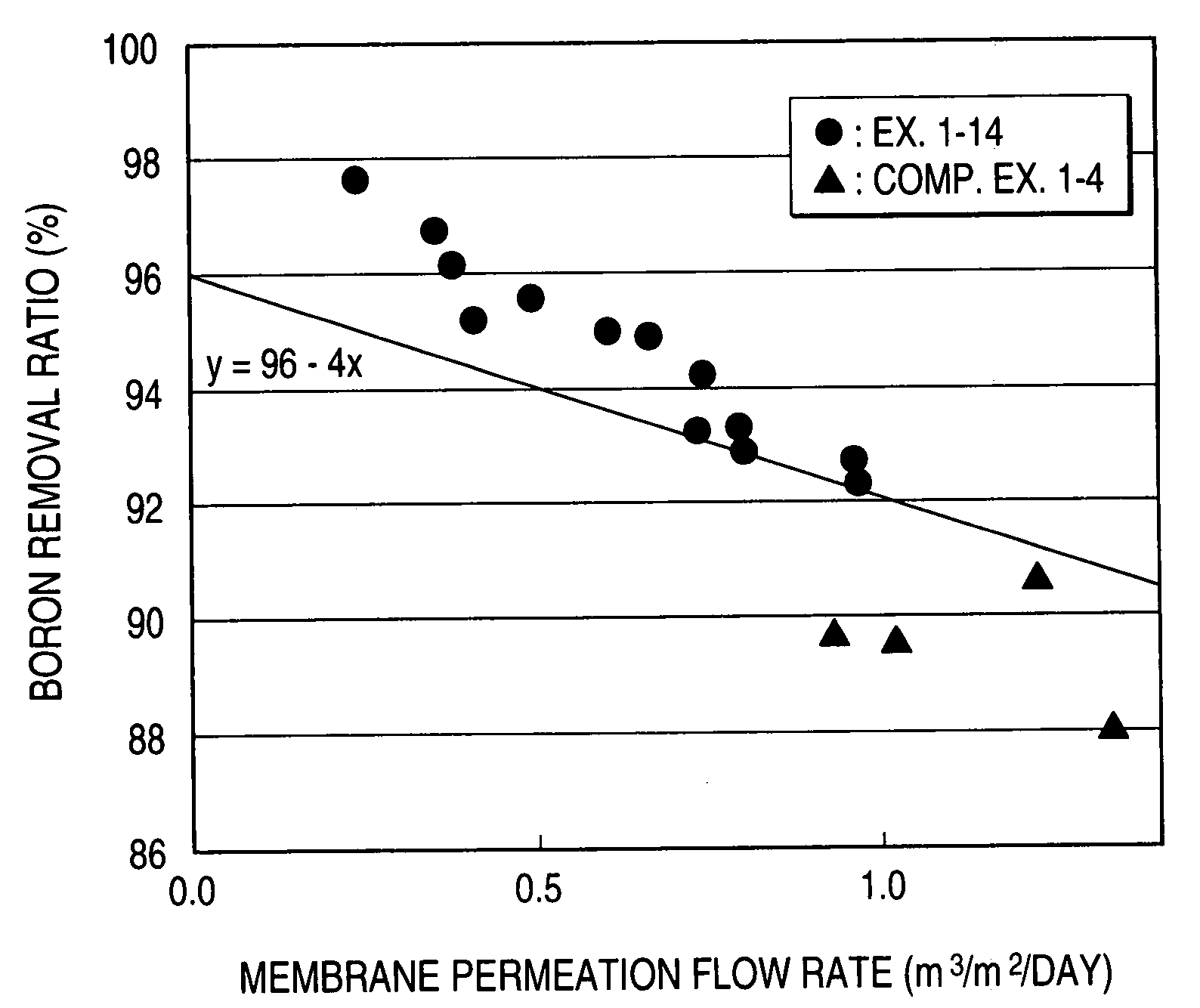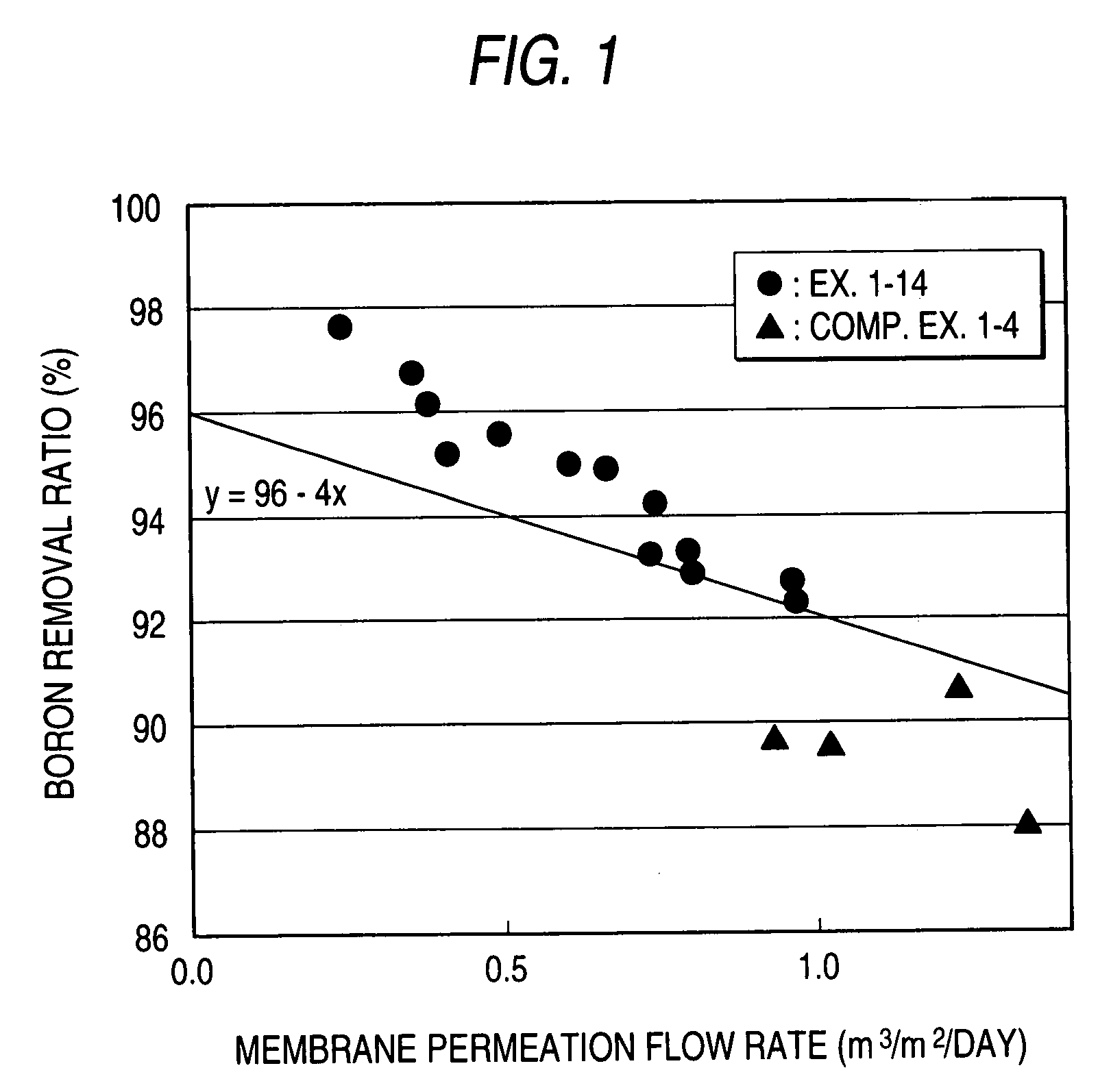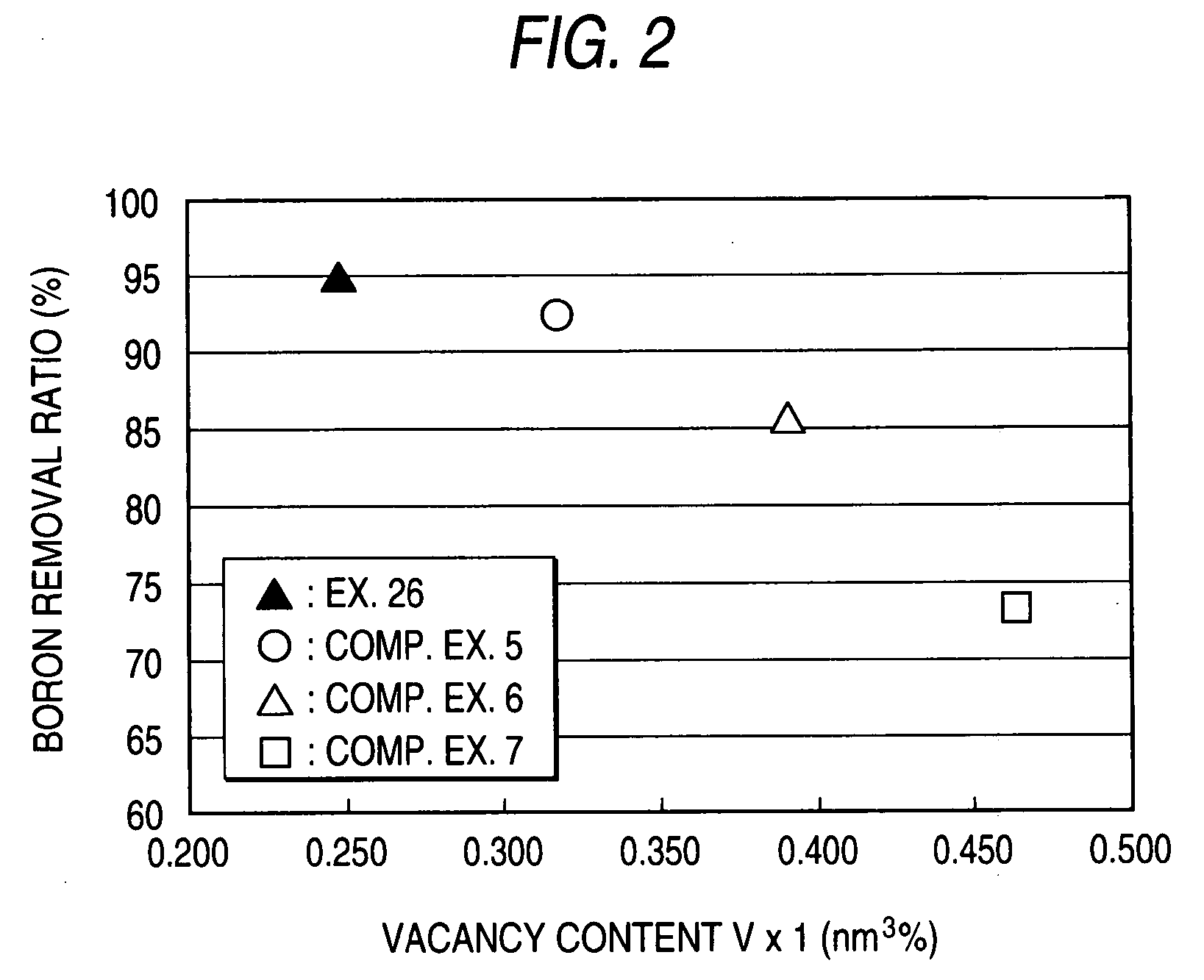Composite Semipermeable Membrane, Production Process Thereof, And Element, Fluid Separation Equipment And Method For Water Treatment Using The Same
a semi-permeable membrane and semi-permeable technology, applied in water/sewage treatment, separation processes, chemical/physical processes, etc., can solve the problems of increasing permeated water volume, deteriorating solute-rejection performance, and increasing water quality standards in the art. , to achieve the effect of high salt removal ratio and high rejection performan
- Summary
- Abstract
- Description
- Claims
- Application Information
AI Technical Summary
Benefits of technology
Problems solved by technology
Method used
Image
Examples
examples 15 to 21
[0084] Each of composite semipermeable membranes was produced in the same manner as in Examples 1 to 14 and Comparative Examples 1 to 4, except for using acid chloride in the n-decane solution of 0.15% TMC at a concentration described in Table 3
[0085] The composite semipermeable membranes were evaluated, and the physical data of membrane permeation flow rate, salt removal ratio, boron removal ratio, and TDS transmission coefficient are shown in Table 3.
TABLE 3MembraneTDSAdded acid halidepermeationBorontransmission(per TMC moleflow rateSalt removalremovalcoefficientconcentration)(m3 / m2 / d)ratio (%)ratio (%)(×10−8 m / sec)Ex. 15Compound 8 (1 mol %)0.8599.9092.991.02Ex. 16Compound 8 (3 mol %)0.7299.8594.481.21Ex. 17Compound 2 (5 mol %)0.8699.9493.200.64Ex. 18Compound 2 (10 mol %)0.5999.8795.000.88Ex. 19Compound 2 (30 mol %)0.1399.1396.051.32Ex. 20Compound 4 (50 mol %)0.3899.8496.360.71Ex. 21Compound 7 (50 mol %)0.4599.9395.510.37
examples 22 to 25
[0086] The same porous substrate film as in Examples 1 to 21 and Comparative Examples 1 to 4 was dipped in an aqueous solution of 3.4% mPDA for 2 minutes, then gradually pulled up in the vertical direction, exposed to nitrogen blow from an air nozzle to thereby remove the excess solution from the surface of the substrate film, and then an n-decane solution of 0.15% TMC was applied thereto so as to completely wet its surface, and kept as such for 1 minute. Next, the film was vertically held for 1 minute and dewatered. Next, an n-decane solution of acid chloride in Table 4 was applied thereto so as to completely wet its surface, and kept as such for 1 minute. Next, the film was vertically held for 1 minute and dewatered. Next, this was dried in air to remove the decane solvent, and then washed with running tap water so as to remove the chemicals remaining in the film. Then, this was washed with hot water at 90° C. for 2 minutes, and dipped in an aqueous solution of sodium hypochlorite...
example 26
[0088] The positron annihilation lifetime spectroscopy by the positron beam method and the evaluation of membrane permeability were carried out for the composite semipermeable membrane produced in Example 18. The results are shows in Table 5 and FIG. 2.
PUM
| Property | Measurement | Unit |
|---|---|---|
| Temperature | aaaaa | aaaaa |
| Fraction | aaaaa | aaaaa |
| Percent by mass | aaaaa | aaaaa |
Abstract
Description
Claims
Application Information
 Login to View More
Login to View More - R&D
- Intellectual Property
- Life Sciences
- Materials
- Tech Scout
- Unparalleled Data Quality
- Higher Quality Content
- 60% Fewer Hallucinations
Browse by: Latest US Patents, China's latest patents, Technical Efficacy Thesaurus, Application Domain, Technology Topic, Popular Technical Reports.
© 2025 PatSnap. All rights reserved.Legal|Privacy policy|Modern Slavery Act Transparency Statement|Sitemap|About US| Contact US: help@patsnap.com



